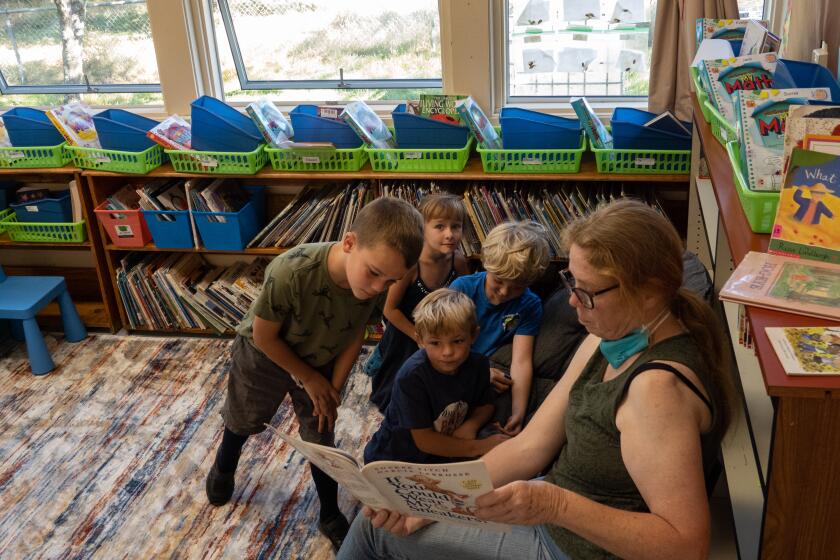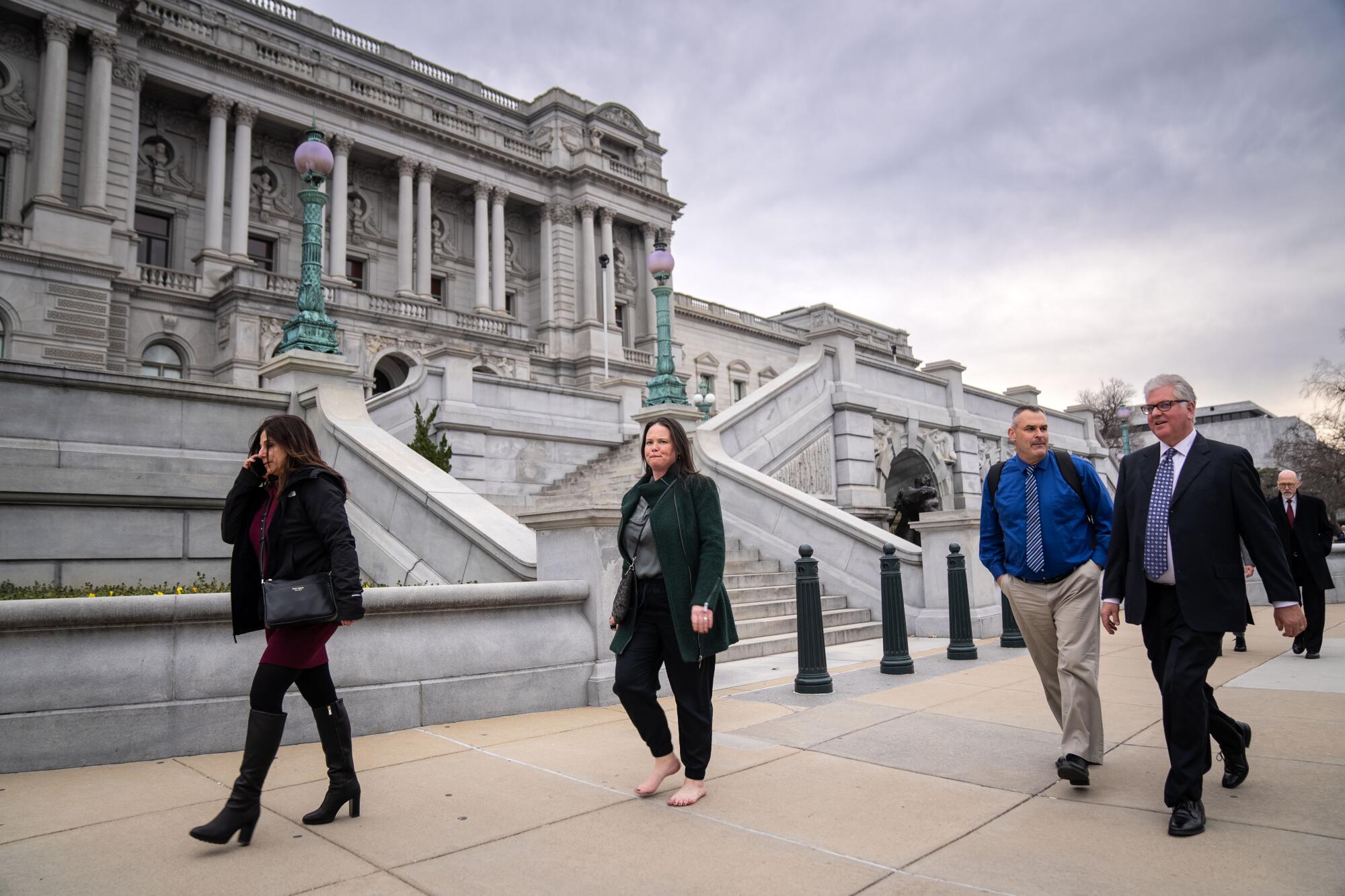
- Share via
WASHINGTON — Anmarie Swanstrom had driven four hours along twisting mountain roads, through the fire-scarred Shasta-Trinity National Forest, to Sacramento to catch a red-eye flight.
Now, here she was — a school superintendent from impoverished Hayfork, Calif. — clutching a pair of black high heels, power-walking in bare feet across Capitol Hill.
She had come to plead for money for the 340 students of the Mountain Valley Unified School District, where she also is a principal.
Swanstrom’s district will lose a significant chunk of its budget if Congress does not renew the Secure Rural Schools Act, a long-standing program for schools in forested counties, by this fall. She would have to lay people off.
In Hayfork — a boom-and-bust town of 2,300 where timber crashed and legal marijuana is now doing the same — students have little access to medical care. Mental health support comes through the schools, which are also evacuation centers when the mountains burn.
“We serve as the heart of the town, and if the schools go, the town will go completely,” Swanstrom said.
In this occasional series, we explore rural, conservative California through its struggling schools, which are cornerstones of life in small towns.
A rural California school district scrambles to find teachers amid a national shortage. It will not offer transitional kindergarten, despite a new law.
People in California’s rural northern reaches, where a conservative spirit reigns in opposition to the state’s famously liberal ethos, often feel forgotten in the halls of power in Sacramento and Washington.
Their towns are shrinking. Their forests are burning. And for their schools, a financial cliff could be coming.
Swanstrom and three other rural Northern California superintendents went to Washington this month to look their legislators in the eye and tell them just how desperate they are.
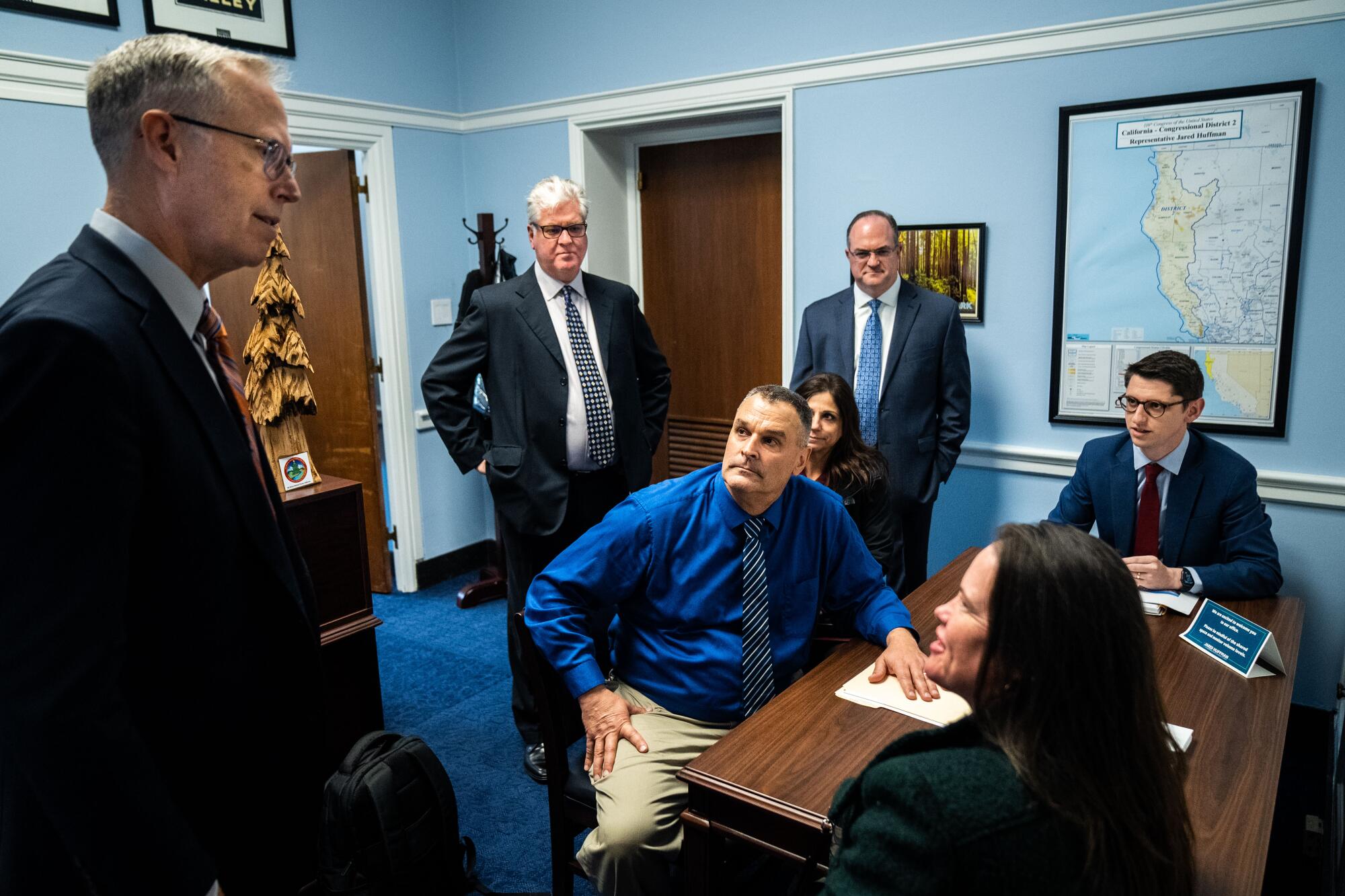
For more than a century, schools like Swanstrom’s, surrounded by national forest land that cannot be taxed have depended upon modest payments through the U.S. Forest Service to stay afloat.
That money has come primarily from logging. Under a 1908 law, counties with national forests — mostly in the rural West — received 25% of what the federal government made from timber sales off that land. The money was split between schools and roads.
But by the early 1990s, the once-thriving logging industry cratered. So did the school funding.
Nearly 17 million acres will fall under the worst ranking from the state fire marshal, a 14.6% increase since the map was last updated in 2007.
In 2000, Congress enacted what was supposed to be a short-term, six-year solution: the Secure Rural Schools & Community Self-Determination Act, with funding based on a complex formula involving historical timber revenues and other factors including the amount of eligible federal land in each county.
Congress never made the program permanent, instead reauthorizing versions of it by tacking it onto other bills — nine times.
Once, it was tucked into a bill to shore up the nation’s helium supply. At one point, it was funded in part by a tax on roll-your-own cigarette machines.
The program “has served as an increasingly tattered bandage for rural communities,” staying alive “through a series of stopgap extensions with increasingly bizarre funding sources,” said Bill Imbergamo, executive director of the Federal Forest Resource Coalition, a timber trade group that supports increased logging on federal land.
Brianna Gallegos, the U.S. Forest Service program manager for Secure Rural Schools, said the program “is so politically driven.” Her agency is the funnel for the school money, but “we just have to wait for Congress to decide ... to reauthorize, extend deadlines, to add new things,” she said.
The amount at stake is what lawmakers call “budget dust” in a federal budget that is trillions of dollars. Last year, the Secure Rural Schools program gave $238 million to 742 counties in 41 states and Puerto Rico.
Calls for permanent funding abound. From Republicans and Democrats. From environmentalists and the timber industry.
A solution inevitably falls victim to partisan bickering. Liberals don’t want to cut down trees. Conservatives want to slash spending.
The latest version of the rural schools program is set to expire in October.
In Northern California, Swanstrom and her fellow superintendents decided they could not sit idly by. A little budget dust goes a long way in a small town.
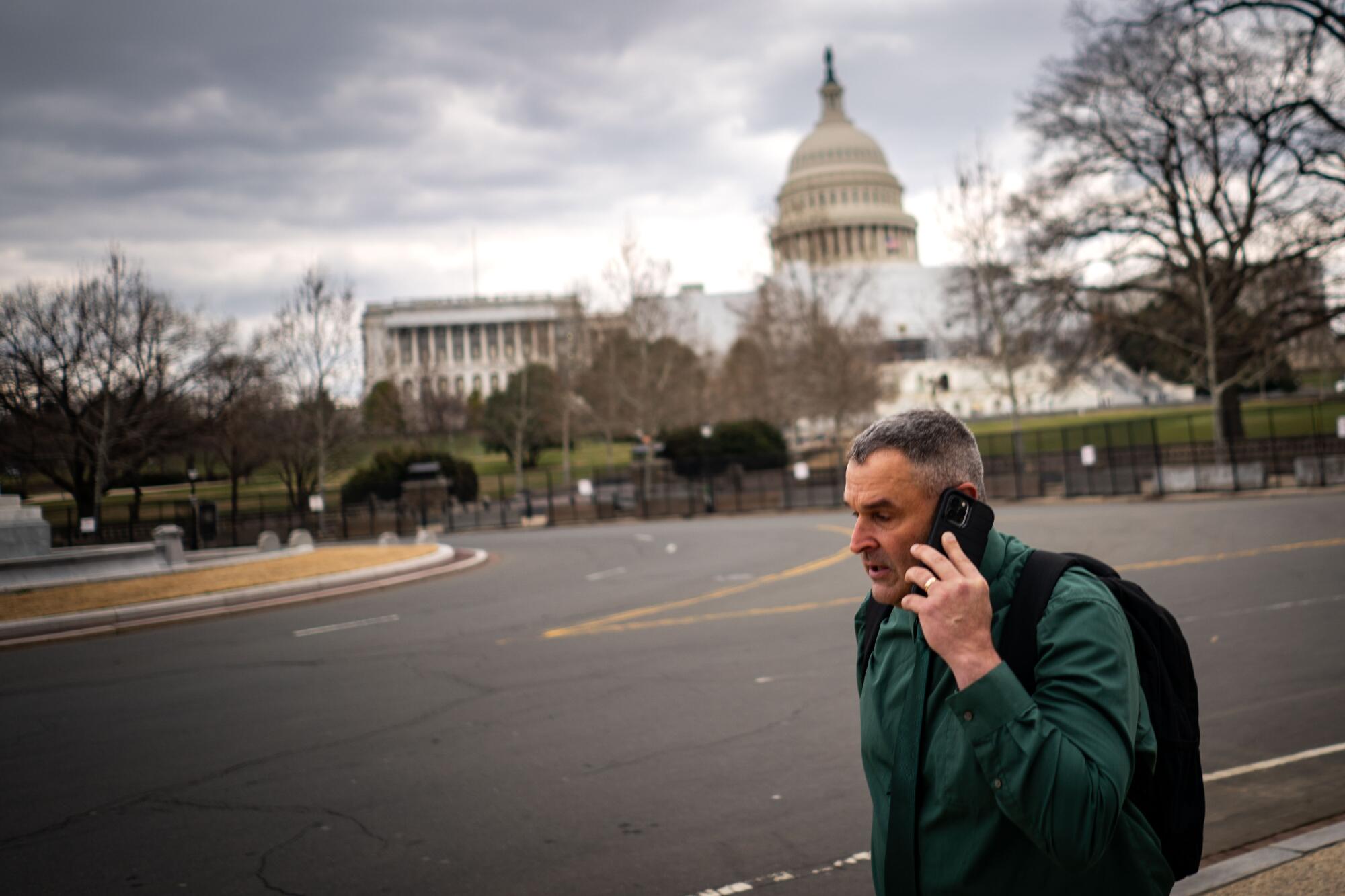
On the first day of their D.C. trip, Jaime Green chuckled as the other superintendents downed coffee during breakfast at a hotel near the Capitol.
“How are you all not naturally awake?” he asked, pouring a cup of milk.
Green, a loud and energetic man who had never traveled east of Texas, had pitched the grassroots gamble after learning that his school district, Trinity Alps Unified in Weaverville, had lost over 60% of its forest reserve money since 2004.
He spent weeks emailing legislators, pleading for a few minutes of face time. Aides and schedulers responded tepidly, if at all.
The highest gas prices in the country are in rural California. Drivers are feeling the pain.
In Trinity County, where Green’s and Swanstrom’s schools are located, the federal government owns more than 75% of the land, limiting the tax base and the ability to pass local bonds for things like campus maintenance.
As the program has been tweaked, funding has seesawed. In 2004, Green’s district of about 700 students got $1.3 million through the Secure Rural Schools Program. Last year, the district received only $525,192.
If that money goes away, Green said, he will have to lay off eight to 10 employees.
Finances have already been tight. After the 2019 discovery of toxic black mold, the campuses of Weaverville Elementary and Trinity High had to be gutted and rebuilt. The same thing had happened in Swanstrom’s district a few years earlier.
In Washington, the superintendents’ first scheduled meeting was with staffers for Sen. Ron Wyden, a Democrat from Oregon whose state gets the most money through the program.
Two hours beforehand, a staffer emailed Green: There were some scheduling issues. Couldn’t they meet virtually?
Green was crestfallen. They had traveled all this way. They’d been rescheduled repeatedly.
School officials are urging Gov. Gavin Newsom and California legislators to require that the state fund school buses for all districts.
He had printed a short proposal asking Congress to consider several options for permanently funding the program, including selective logging or putting green energy sources like windmills or solar farms on federal land.
He just wanted to hand it to a real human being.
“It’s always a no if you don’t ask,” Sheree Beans, his district’s director of business services, reassured him.
As they walked along the National Mall, Green’s phone started quacking with a duck call ringtone.
It was another Northern California superintendent who had planned to come but had to bow out at the last minute.
The likely loss of the Wyden meeting was a blow, he told Green, but he had his own crisis to deal with: A kindergarten teacher had just quit, leaving yet another staff opening amid a painful teacher shortage.
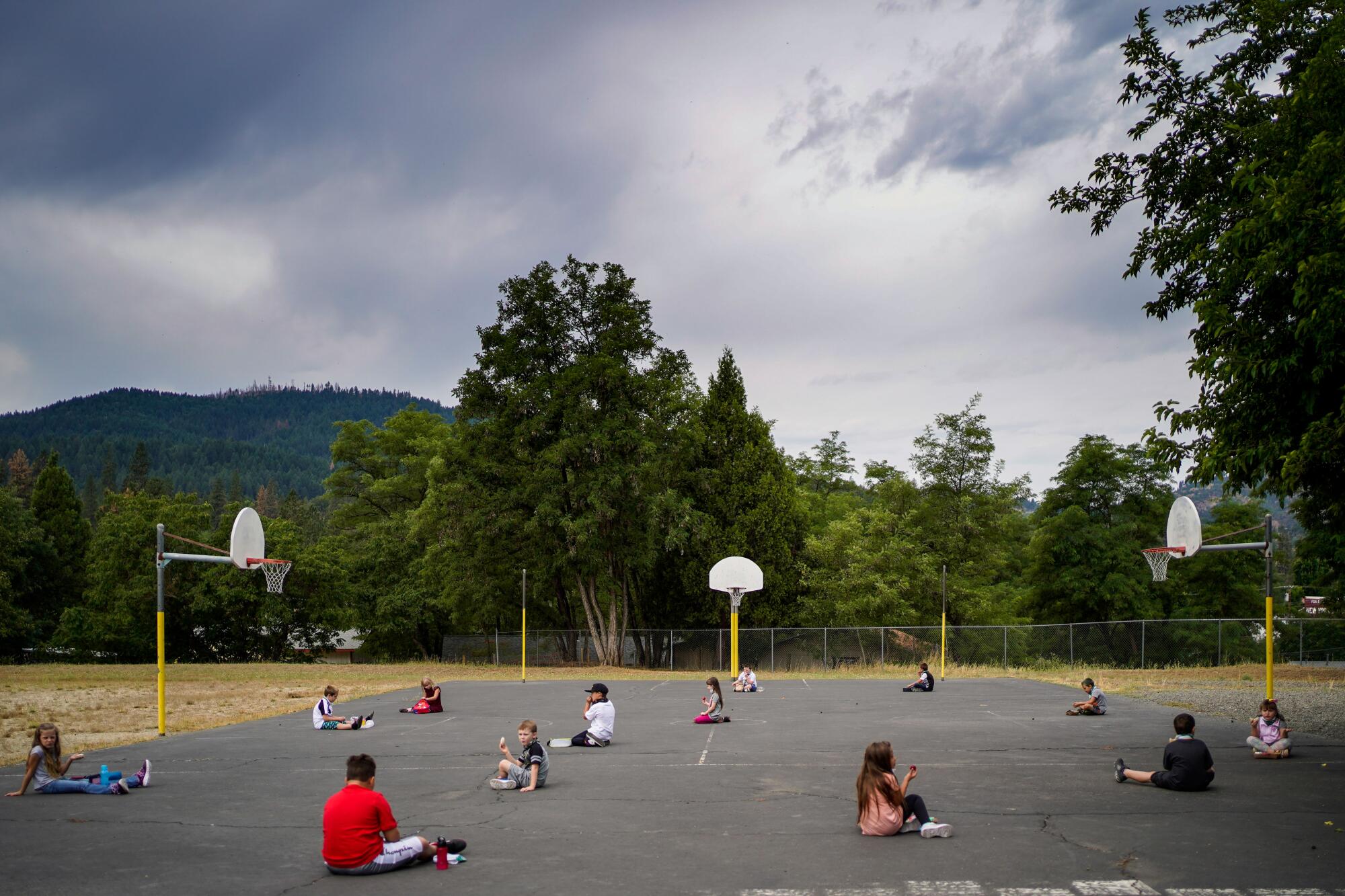
The potential loss of the Secure Rural Schools program comes on top of other upcoming funding losses.
Billions of dollars in federal pandemic relief that bolstered school budgets amid the COVID-19 crisis will run out in 2024. And in California, where state funding is tied to attendance, public K-12 enrollment during the last academic year dropped to its lowest level since 2000.
“There is what is characterized in the education community as a ‘cliff effect’ coming,” said Kevin Gordon, a longtime education lobbyist in Sacramento.
Rural school districts, he said, could be hit especially hard.
In California, “the central focus is on the children in larger cities, urban areas,” while “rural schools get forgotten,” said Tim Taylor, executive director of the Small School Districts’ Assn.
Having school administrators plead for forest reserve dollars every few years is not sustainable — and they don’t have the resources of bigger districts for expenses like grant writing, said Assemblywoman Megan Dahle, vice chair of the California State Assembly on Education.
“We need to solve the funding issue once and for all and get back to the business of educating our kids,” said Dahle, a Republican from the Northern California town of Bieber, population 250.
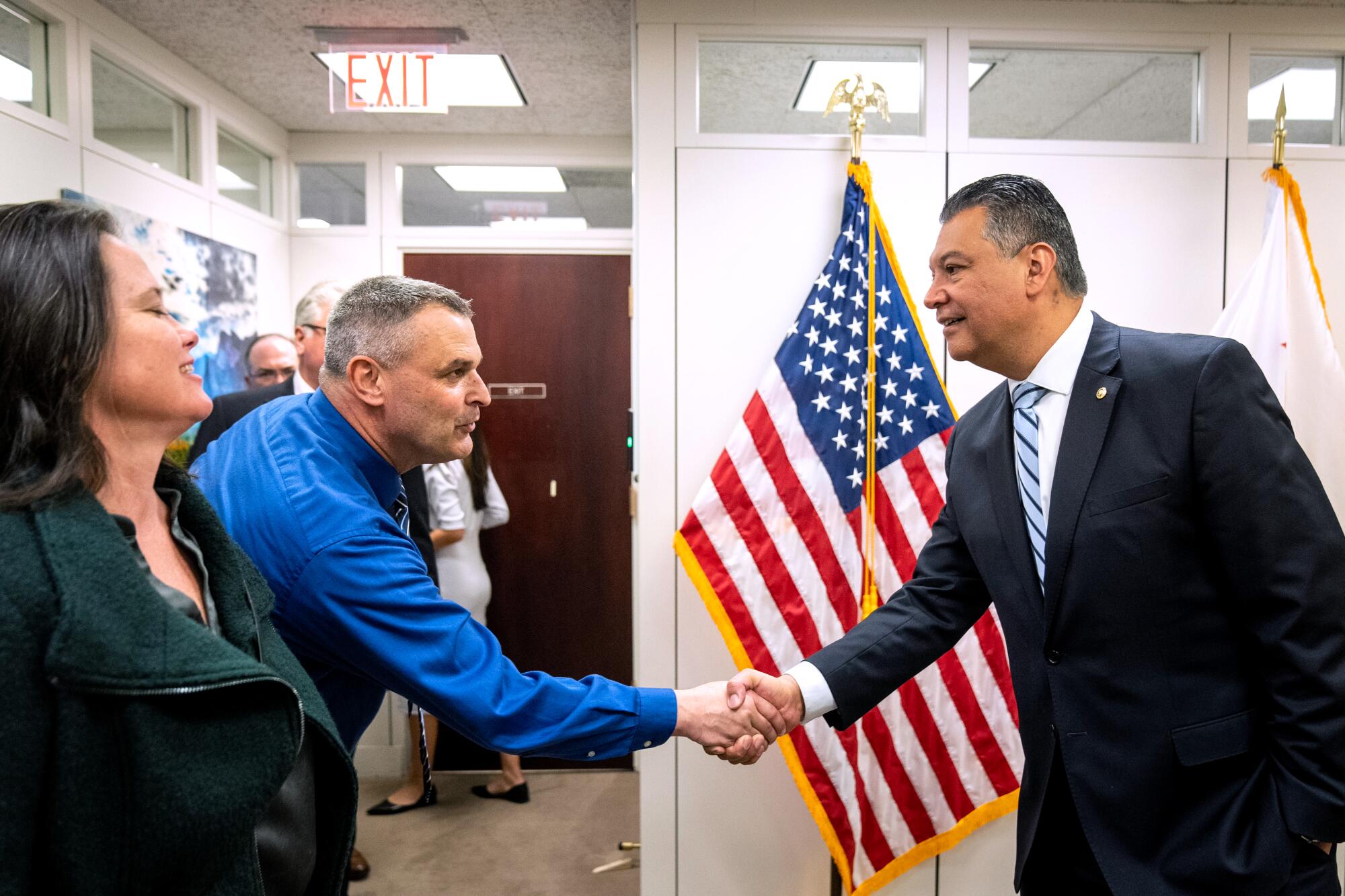
On the second day of their trip, the superintendents squeezed into the Capitol Hill office of Rep. Jared Huffman (D-San Rafael). He gave them half an hour.
A Times reporter was not allowed inside. In a later phone interview, Huffman said Secure Rural Schools has “become a political football,” continually pushed to the brink before being reauthorized.
Rural schools, he said, “have kind of been used as a prop for folks with a different agenda, folks who want to roll back environmental protections, who want to do mandatory logging quotas in national forests.”
The COVID-19 pandemic unexpectedly saved one of the smallest public schools in California, even as enrollment is plummeting elsewhere.
“I’d like to see the federal government just embrace this as an ongoing financial responsibility,” he said.
Are there such proposals in Congress?
“Not good ones,” Huffman said.
After meeting Huffman, the superintendents raced across Capitol Hill to the office of California Sen. Alex Padilla.
It was the night of President Biden’s State of the Union speech. The Capitol was being fortified with non-scalable fencing. Police were everywhere.
In Padilla’s front office, Green commented that their pitch should be a slam dunk because it involved kids’ education. But they weren’t the only ones with a sympathetic cause. Another group was there to discuss children’s hospitals.
The senator gave the superintendents about 90 seconds to snap a photo. A staffer listened for four minutes.
Outside, Swanstrom said that even a short interaction goes a long way.
“I think it’s important that they see our faces,” she said. “We’re caught in the crosshairs here. We need to change the narrative. We need to make this about supporting rural schools, separate from timber. If we don’t do that, we’re never going to get funding that’s equitable.”
In the State of the Union that night, Biden said: “Let’s give public school teachers a raise.” Watching from his hotel nearby, Green cheered.
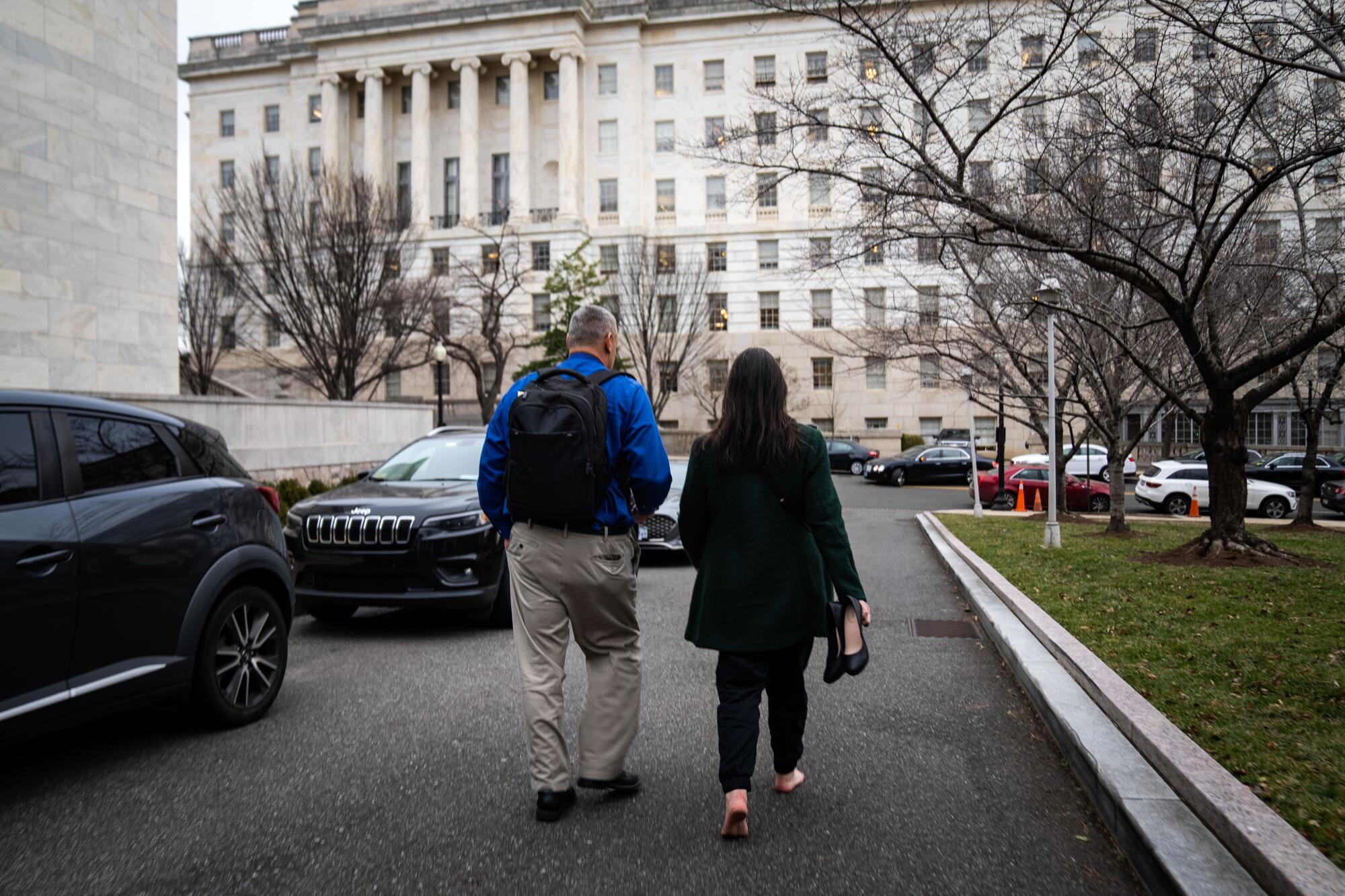
On their final day in Washington, the superintendents scored a few minutes with one of Wyden’s staff members.
Then, Rep. Doug LaMalfa, chairman of the House Agriculture Subcommittee on Forestry, ushered them into his office, where shelves displayed a book titled “Woke, Inc.” and a collection of Rush Limbaugh on-air commentaries. The Republican from Richvale in Butte County gave them an hour of his time.
The conversation quickly turned to the heated debate over whether to increase logging in national forests, which LaMalfa supports.
“I’m tired of watching towns in my area almost burn,” he said.
A California lumber town has repeatedly bounced back from adversity —fires, economic downturns, COVID-19. Like the town, Chase Kirby is a survivor.
Urban Democrats, he said, don’t understand the need for cutting trees in forests that burn hotter and faster than ever before. And, he said, they don’t appreciate the importance of the school funding that the timber industry has propped up for so long.
Secure Rural Schools has a “very, very high chance of reauthorization,” he said. But making it a permanent program — which he supports — would be an uphill battle in this divided Congress.
“We don’t want handouts,” said Jeff Harris, superintendent of the Del Norte County schools, echoing a common rural sentiment. “We want to fund it.”
LaMalfa told the superintendents he wanted to start getting them in front of committees, telling their stories.
“What you’re doing here is the right thing,” he said. “You’re in town.”
Afterward, the superintendents were elated. The trip seemed worth it.
There was no solution yet. But they at least felt a little bit heard.
More to Read
Sign up for Essential California
The most important California stories and recommendations in your inbox every morning.
You may occasionally receive promotional content from the Los Angeles Times.





